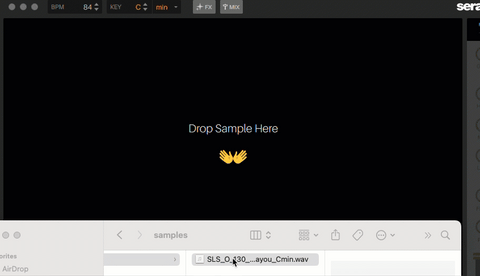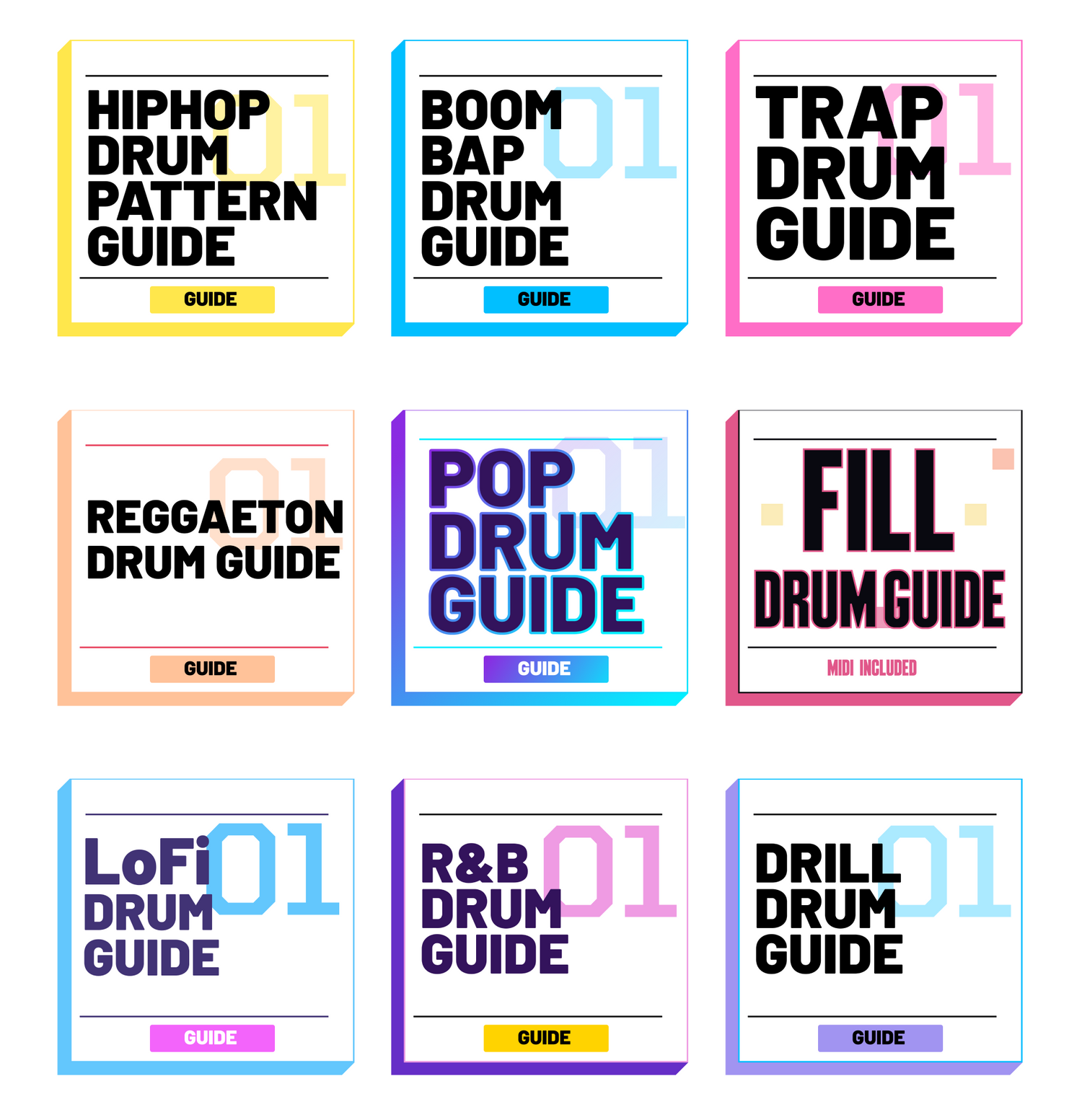Making music is fun. Unfortunately, many of us grow up not learning how to play instruments, but still desire to make music. This post covers how to produce beats: with samples and with MIDI.
And don't worry, even if you're not trained in an instrument or making music you'll be able to do it.
Chapter 1: Samples
Here's what we'll make. You don't need to know how to play any instruments to make this:
There's a few things you need. We'll cover them in this post and walk through how to produce beats.
Equipment You Will Need
You'll simply need a computer (laptop/desktop) and a DAW.
What Is A DAW?
DAW stands for Digital Audio Workstation and is basically the app that lets you make music on your computer. Just like a text editor like Microsoft Word or Google Docs lets you write, a DAW lets you make music.
There's a lot of DAWs out there with all sorts of pros and cons. For this article we're going to use Serato Studio. It has a free version, and it's built in sampler is one of the best out there in the market.
How To Make Beats With Samples
For this next part we'll get into sampling.Sampling is a technique that's been around for a long time and used across genres from hip hop to pop and EDM.
What Is Sampling?
Sampling is the process of taking a portion of music from one song, and using it in another song, usually with some modifications. The original sample can be range from a split second to a whole chorus. It can be any part of song - vocal, instrumental, or drums.
Typically the sample is manipulated in way to make it unique. This can be by pitching it, changing the tempo, reversing it, or rearranging how it is played. Or all of the above.
Samplers are the general class of software that let's a producer do this. Most DAWs have a built in sampler.
The best way to understand sampling, is to look at examples of what has been done in the past.
Examples of Sampling from Tracklib
Tracklib does a great job of highlighting how sampling is used. Here's a great example from Tracklib showing how sampling works:
Where To Find Samples
Now that we covered samples, we'll need to find samples. Here are a couple of places where you can find samples
TRACKLIB
Tracklib is a service offering pre-cleared samples from actual released music. The short story on sampling is musicians would sample released music - sometimes with and sometimes without the original artists permission. It's generally a pain to get approval and involves a lengthy process that is time consuming and riddled with lawyers. Tracklib clears all that up by offering pre-cleared music.
SPLICE
Splice offers what is called royalty-free samples. These are samples that are not released songs. Rather they are samples that music producers and composers create and put on Splice. As part of the arrangement, the compositions are all original and royalty free. As such you can use them without having to pay any royalties.
There are many more places, but those are two great places to start.
Producing The Beat With Samples
Let's get into producing the beat. First let's open up Serato Studio. Next thing we'll do is set up a drum pattern. Serato Studio uses the grid sequencer and we'll use a drum guide from MIDI Mighty to get started.
I decided on making a boom bap beat, so I'll use the Boom Bap MIDI Drum Guide. The guide works well with Serato Studio since they both follow a drum grid pattern.
Let's take a listen:
Actionable Tip:You don't have to use boom bap drum patterns if you do not want to. Here are 10 drum patterns to get started.
Now that we have the drum pattern, let's drag in the sample. I found this one off splice
And to get it into my Serato Studio DAW I just drag and drop it in.

You can see Serato Studio automatically creates chopping points on the sample. You can use you keyboard to play the different chops.

In the image above:
- the top part is the sample. The vertical lines represent the "chops" of the sample. These are essentially different points of the sample where if you play the corresponding key, the sample will play at that part
- The corresponding keys. You can use your QWERTY keyboard to play the different chops of the sample
Play around until you find a pattern you like. For this first groove I'm going to keep it simple at first. Here's what looking for samples will look and sound like.
Play around until you find a nice flow you like. And once you have the sample chopped and drums, it's time to add in a bassline.
Serato Studio makes it easy to play in key. What this means is Serato Studio locks in only the notes that are in the key of the song. You can play the notes with your keyboard and rest assured you'll only play in key.
Now that I have the basics down, I'll make a second groove so I can flesh out the beat. Basically I want the beat to be slightly different for the different at times. Think about it as a hook or a slight change up for a different verse.
I'll only add one groove since I'm not necessarily making a full song. I just want to make the beat and show a slight variation of the beat. You can obvioulsy keep this up and create all parts of the song, but for this section I just want on slight variation.
I'll also add an intro and an outro.
The way I do this is simply following the same steps above. Finding different chops and modifying the drums.
For extra interest, try adding in a drum fill pattern. Here are ten simple drum fills you can add in right now
Arrange Your Beats
Now that I have my grooves, intro and outro, I'll just arrange it on the timeline.
And next I'll export it out
And here's the final beat:
How To Produce Beats With Samples
There it is. A simple way to produce beats with samples. This is the foundation of a beat - you have the sample, drums, and a bassline. You can add more. - like a melody on top - or add in a ton of variation for different parts of a song.
But this is general foundation to build upon.
Chapter 2: MIDI
How To Make Beats With MIDI Chords and Melodies
Another way to produce beats with with MIDI chords and melodies. If you're not familiar with MIDI the contain note information but no audio.
They say what chords, melodies, notes for the computer to play. You assign it a virtual instrument and that's how you get sound.
MIDI is a great place to start because the base chord/melody/bassline is done for you. You just have to find the right sound that you feel comfortable with.
Making A Beat With MIDI
We'll use MIDI chords, melodies, and basslines from the LoFi Carefree Summer Chords and Melodies pack. It has 24 full sessions for us to pull from.
And once you found one it's as easy as drag and drop. In this example, I loaded up a key/strings combo for my chords, a 80's synth for my melody, an electric bass, and lofi drums.

From there, it's as simple as dragging in the MIDI.
Drag the MID file you want and drop it with the sound you want. So since I want the melody to be the 80s Sine Synth I'll drag the melody file on to that instrument.
I'll do the same with the chords and bass. For the drums, I used the LoFi Drum Pattern guide for a Lofi Drum Pattern.
Pretty straightforward with drag and drop. Obviously a lot more to do to edit the sounds and flesh out the beat to get it where you want.
But as you can see, this will save you hours of time and gets momentum on your side.
Make Your Own Melody from The Chord Progression
So you can see it's pretty easy to make a beat with MIDI melodies, chords, and basslines.
The best part is it's easy to customize MIDI. You can switch up the sounds and find the best ones for you. And then process the effects to really dial in your sound.
If you want to make your own melody, check out this post on How To Make Melodies From Chords. It shows you how to take a chord progression like the one above and build out a complementary melody.
Fading Out
Following the process above is how to produce beats with samples or MIDI. For the drums, we used the Boom Bap MIDI Drum Guide, but there are a ton of other guides if you're looking for other genres.
For MIDI chords, melodies, and basslines, check out the LoFi Carefree Summer pack. Plenty of chords, melodies, and basslines in a carefree summer vibe.
They'll help you speed up your workflow and boost your creativity. One of the biggest problems facing producers is beat block. These guides and MIDI help you get over beat block and get momentum in making music.
Cole



